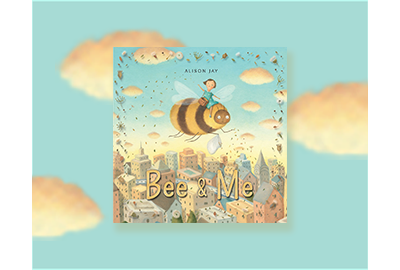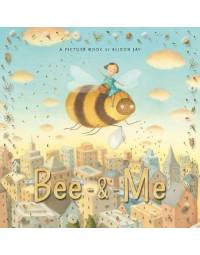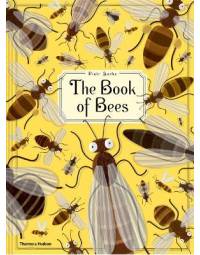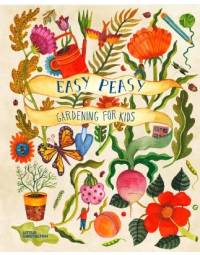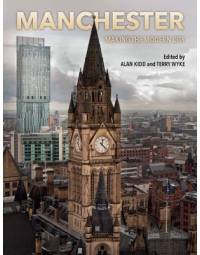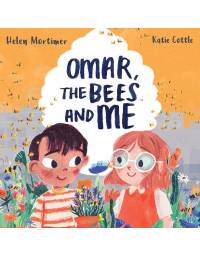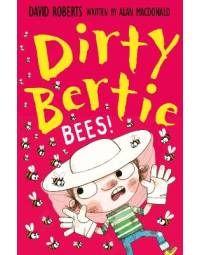Why not create a BUZZ about reading and use ‘Bee & Me,’ by Alison Jay as a whole-school book? Everyone can dress as bees too! 'Bee & Me’ is a wordless picture book, yet every page is a stimulus for a wealth of discussion. A bee flies in the window and a little girl is frightened. She traps the bee and then wonders what to do…
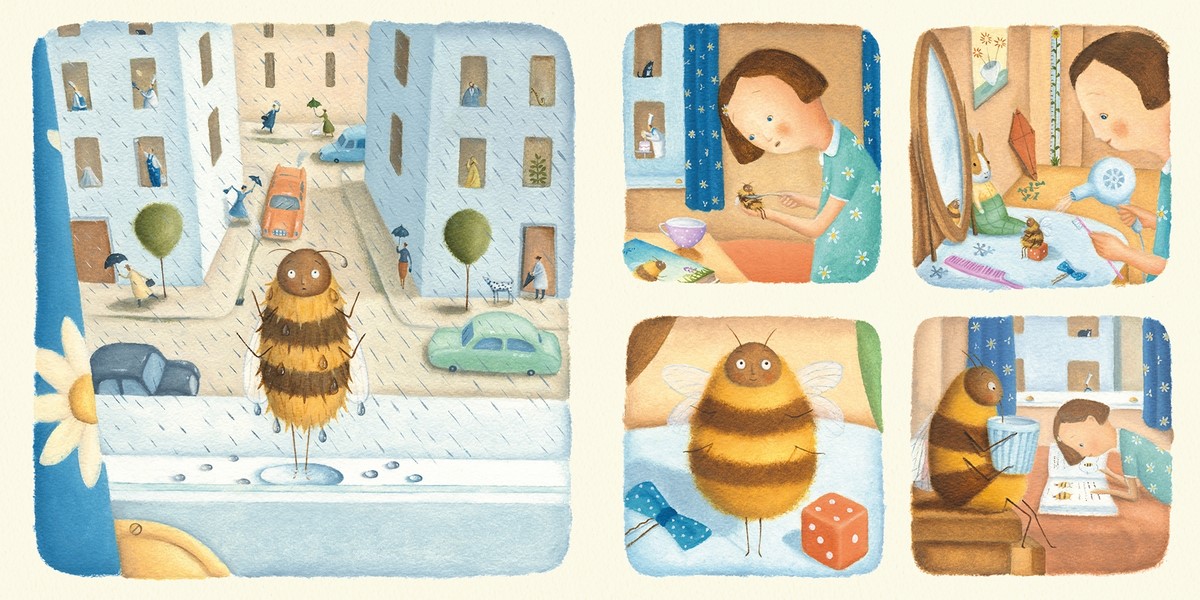

Illustration of the little girl rescuing the bee from the rain in 'Bee & Me.'
This is the perfect book to use with children from EYFS to Y6 as they can create the text to match the pictures. After sharing the text as a whole class (a visualizer would be great here), children can read this text in pairs or independently adding as much or little detail to the text. Age-appropriate vocabulary word mats could be provided to support and challenge children when ‘reading’ and interpretting the pictures.
Below are some activities that you could try with different year groups.
Progression in writing opportunities
A great activity to spark creativity and curiosity is to get pupils to write text or speech bubbles on post-its for each scene in the story. It could be useful to enlarge the book's pages or make it even visually exciting with bee shaped speech bubbes!
- Y1 children need to be able to correctly demarcate a series of sentences so this sample spread is perfect for providing the content for children in year 1 to write simple sentences. Wordless books remove the difficulty of content leaving the children to focus on the composition and technicalities of sentences.
- Y2 children can complete a similar activity – using the series of pictures to create sentences to match. They should be able to use noun phrases, subordinating conjunctions, co-ordinating conjunctions and perhaps contractions.
- Y3 are introduced to paragraphing and dialogue so the sample page could initiate an understanding of a paragraph with some dialogue. This could be further explored and developed in Y4 where dialogue can be embedded. UKS2 children could focus more on integrating dialogue after describing characters and setting.
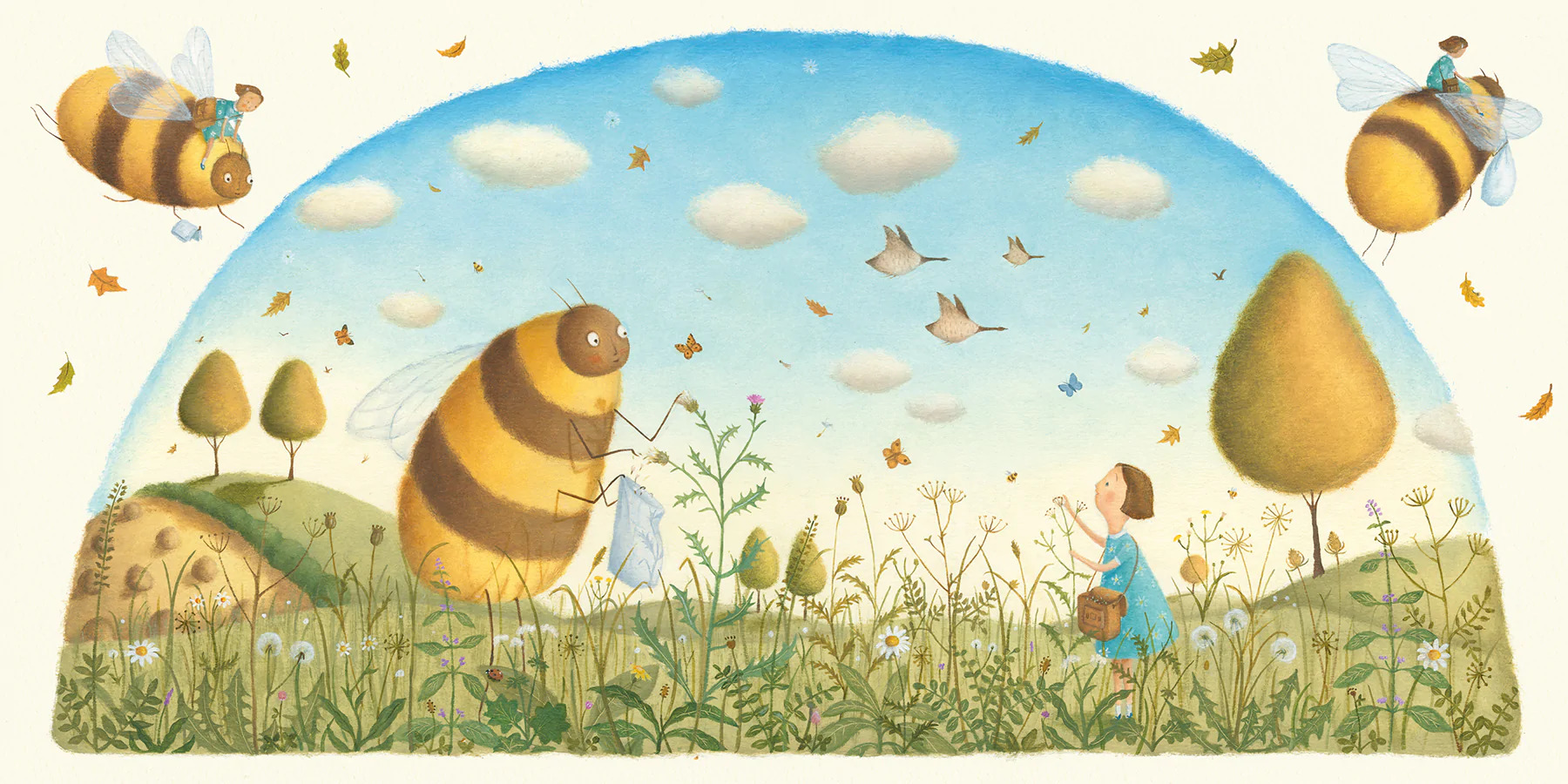

A beautiful scene of the bee and girl exploring the natural world together.
Suggested writing activities
There are endless routes to venture down when setting a writing task for a group of students. Some of these ideas include:
- Character descriptions of the young girl and bee
- Recounting the story
- Changing how the story ends
- Writing a sequel
- Describing another adventure with the bee
- Diary writing – writing entries at various points in the story from perspective of the girl or bee
- Letter writing – thank you letter from the girl or bee
- Instructions– how to look after a bee, how to make bee medicine
- Survival guide – how to survive a week with a human from the bee’s perspective. This could be a horror story, with human's being scary giants compared to the tiny insects.
- Comic strips – use some of Marcia Williams’ comic strip books as an example of how to create a comic strip to recount this story
- If Bee-&-Me was a film, what would the main song be? Writing song lyrics to reflect what happens in the plot
- Non-chronological report about bees
- Award ceremony – what awards might we give to bees? Be creative with categories
- Create an advert – using any media to advertise a new honey
- Creative and imaginative – writing in role as pollen
- Record breaking texts – research some records related to bees and create a Guinness book of records style page
- Design a bee hive and explain how it works and persuade us to buy it
- Explanation text – why we need bees, how bees make honey
- Persuasive text – charity appeal to save the bees
- Speech – bees have rights (perspective of a bee)
- Journalism – recount of the event in the form of a live broadcast or a newspaper article. For example, the Daily Buzz published the headline "Human sized bee invades neighbourhood!"
- Playscript – conversation between the bee and the girl
- Interview – with a chosen newspaper or magazine between the girl and journalist. Different media outlets could have different styles of interviewing
- Bird’s eye view as a commentary – description of the adventure on the bee’s back
- The bee’s Twitter feed – summarising the main points of the story at various stages
- Poetry – playing with words ‘Bee Mine’ etc…
- Biography – of the bee, focus on the life cycle or the different roles of bees in the hive
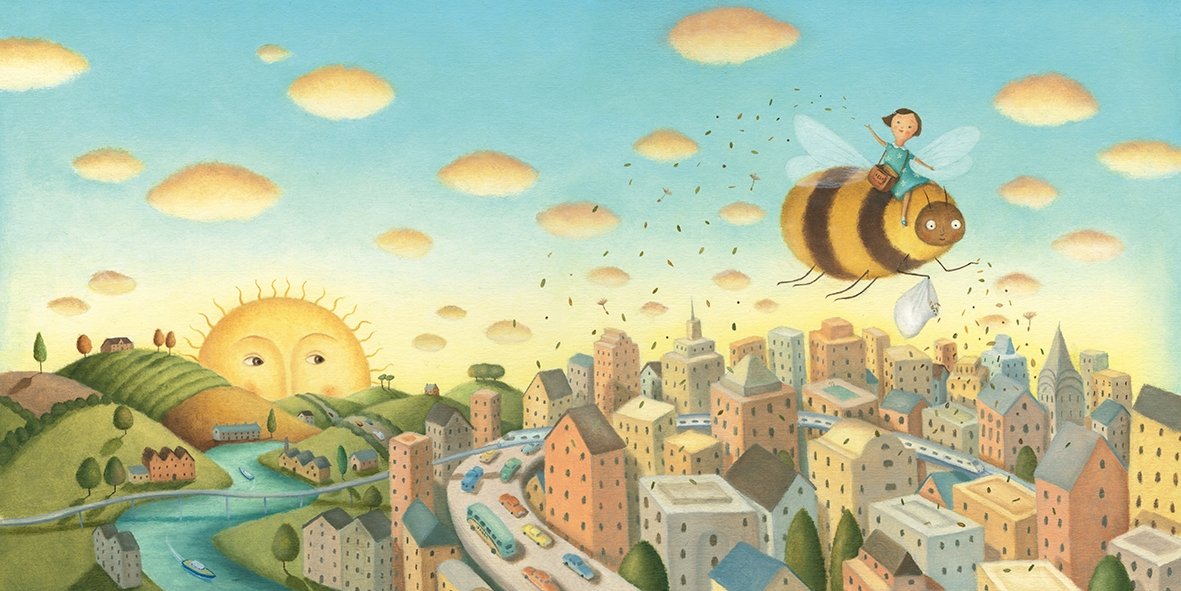

The girl and bee flying high over the city, bringing wild meadow flowers into the urban area.
Other curriculum areas
This amazing non-fiction book includes a wealth of information spanning many different topics related to bees, including:
Art/DT: the bee travels around your local area, what sights would they see? Pupils could sketch or collage local landmarks. Make clay or modroc bees. Use various media to print bee designs on posters or t shirts. Engage pupils with observational drawing of the bee’s body.
History: teach pupils about the significance of the Manchester Worker Bee and the industrial revolution. Use Tony Walsh’s poem to support the history of Manchester.
Science: educate children about the different roles of bees in the hive, types of bee hives, bees important role in the ecosystem, the fruit and vegetables that need bees to grow, the job of a bee keeper and the science of bee stings.
Gardening: use the section at the back of the book to lead some gardening sessions and creating a bee-friendly area.
Dance: use non-fiction texts to inspire children to create a ‘waggle dance.’
'Bee & Me' is available to order on the Madeleine Lindley website or to pick up at the Book Centre. If you are a teacher or work at a school and would be interested in this type of book, find out more about our school library supply service.

